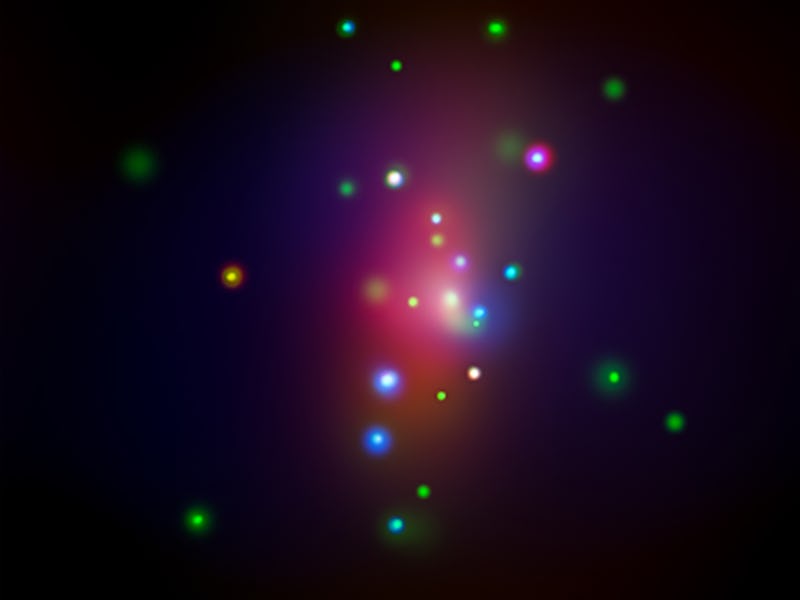A supernova is perhaps the most spectacular event in the universe, but one in particular has researchers puzzled. Sure, things change pretty drastically when a star explodes, but usually not as fast as one veritable shape-shifter astronomers are calling a “chameleon supernova” — and certainly not as abruptly. Now, new research might explain what’s going on with this extra-special supernova, and the secret behind the transformation might totally change how scientists think about stars.
The supernova, SN 2014C, is off in a spiral galaxy that’s somewhere between 36 million to 46 million light-years away. Scientists only discovered it in 2014, but the dramatic explosion had totally changed in just a year. There are two types of supernova, NASA explains. Type I occurs when an old star has already exhausted most of its hydrogen, and as a result, the supernova doesn’t have a lot of fuel. Stars that explode in a much rarer Type II supernovas still have tons and tons of hydrogen. The weird thing about the “chameleon supernova” was that it started out as a Type I supernova and, suddenly, became a Type II.
After lots of study, experts found that the supernova’s shockwave was slamming into a “shell” of hydrogen that was surrounding where the star used to be. Where did this hydrogen come from?
Well, a new study using NASA’s NuSTAR (Nuclear Spectroscopic Telescope Array), researchers were able to observe the highest-energy X-rays and estimate how fast the supernova expanded, as well as how much mass was in the outer shell it had run up against. What they found, according to a new study published in The Astrophysical Journal, was that the old star had thrown off lots and lots of hydrogen, as well as heavier materials, as long as a century before going supernova. NASA says the star essentially expelled the mass of our sun. This is highly unusual.
This image shows spiral galaxy NGC 7331, center, where astronomers observed the unusual supernova SN 2014C.
“Expelling this material late in life is likely a way that stars give elements, which they produce during their lifetimes, back to their environment,” said Raffaella Margutti, a member of Northwestern’s Center for Interdisciplinary Exploration and Research in Astrophysics.
“The notion that a star could expel such a huge amount of matter in a short interval is completely new,” said Fiona Harrison, a NuSTAR principal investigator. “It is challenging our fundamental ideas about how massive stars evolve, and eventually explode, distributing the chemical elements necessary for life.”
The two leading theories for why SN 2014C acted the way it did are that it either had a companion star in a binary system at one point (which is fairly common for big stars) or that there’s something fundamentally missing from scientists’ current understand of the nuclear reactions that trigger supernovas. In either case, it suggests that we ought to pay attention to old stars.
“This ‘chameleon supernova’ may represent a new mechanism of how massive stars deliver elements created in their cores to the rest of the universe,” Margutti said in a statement.
